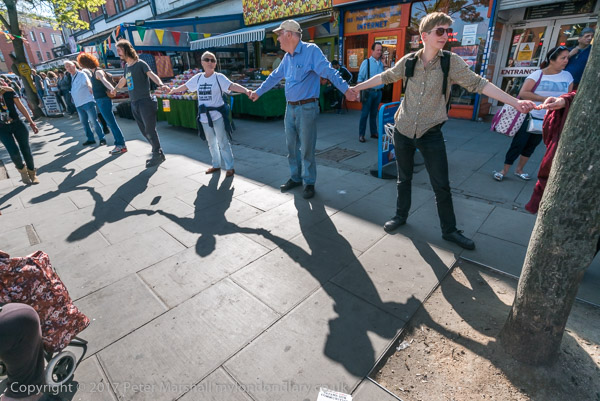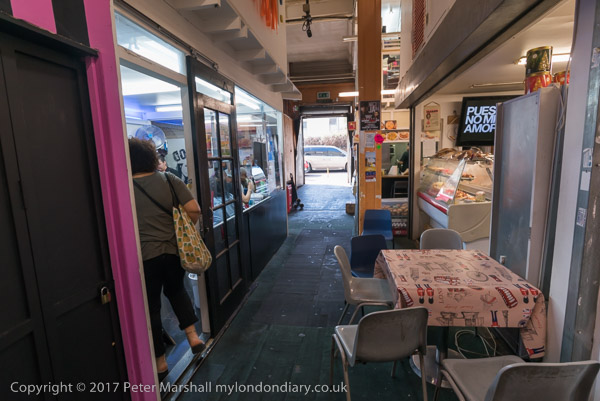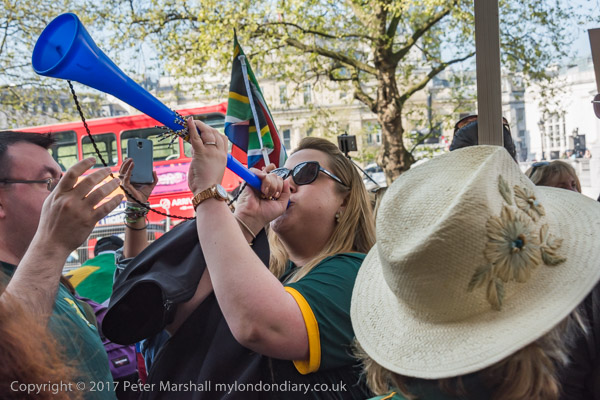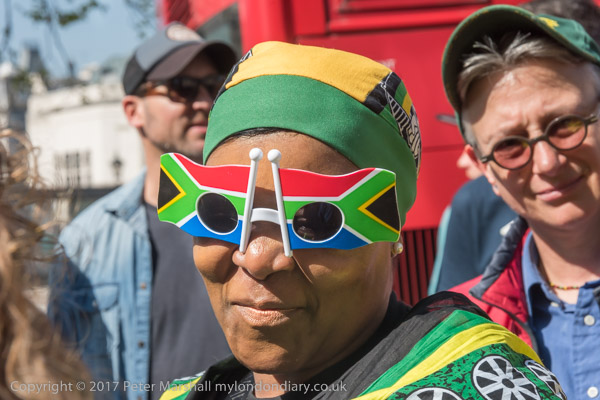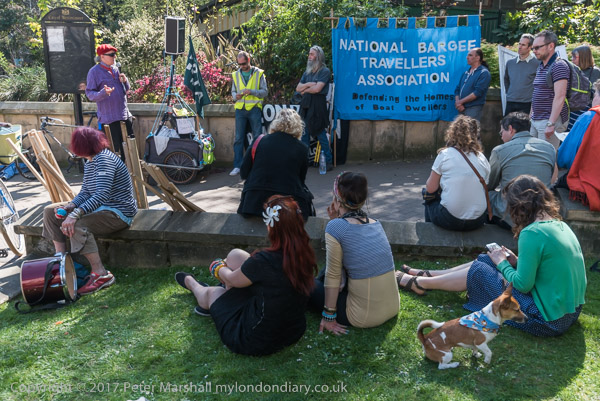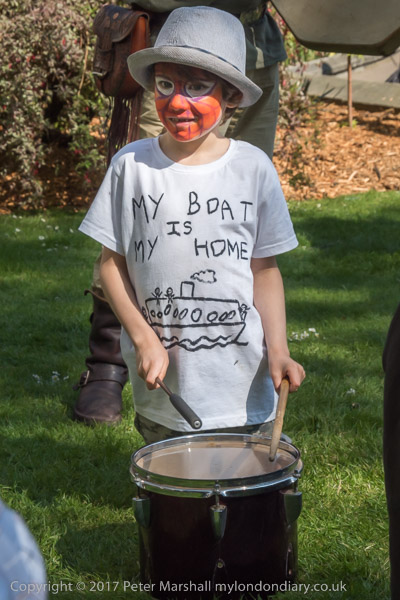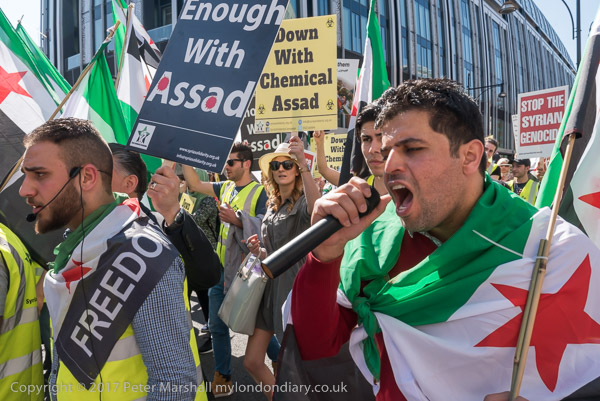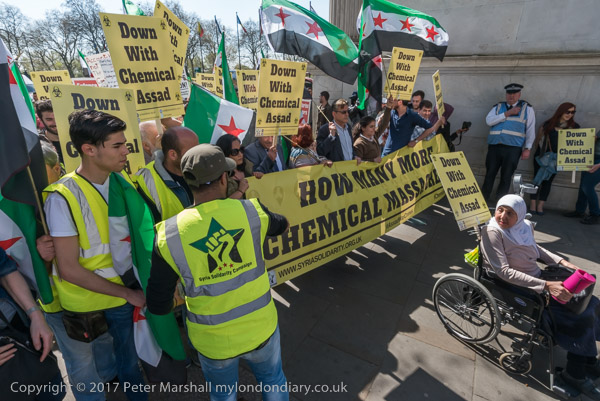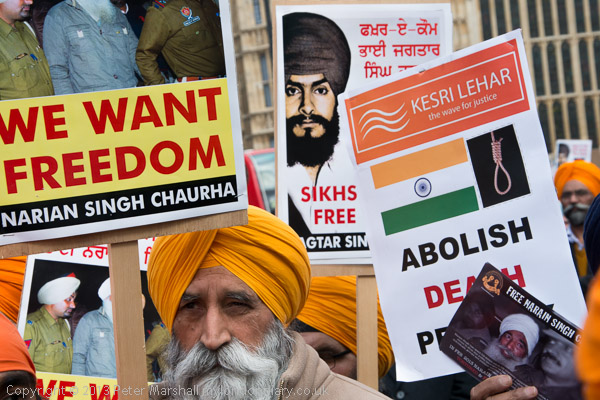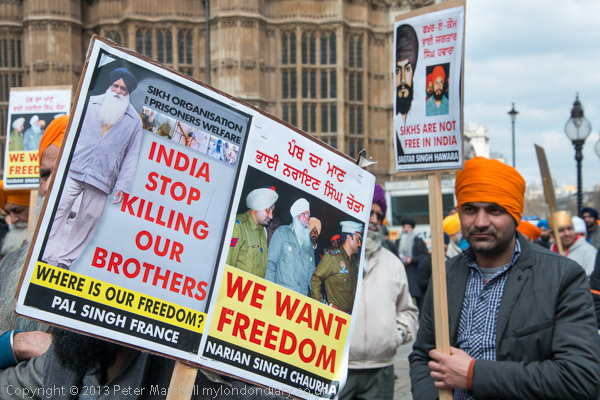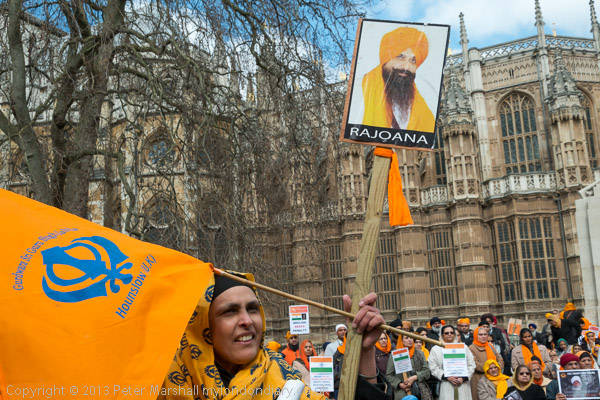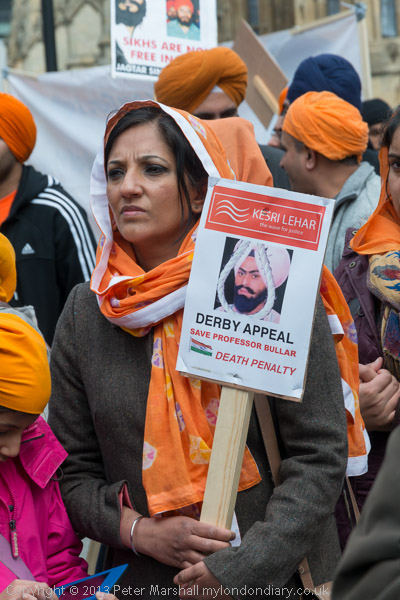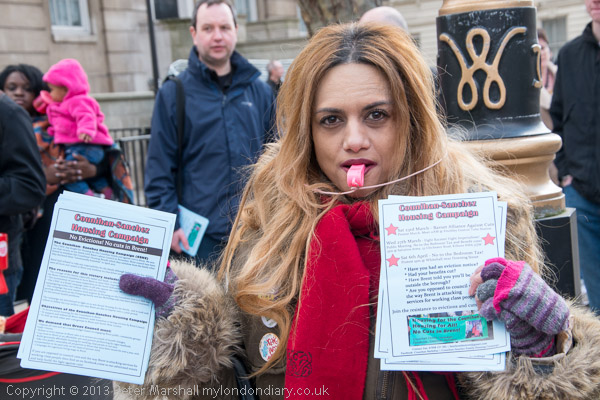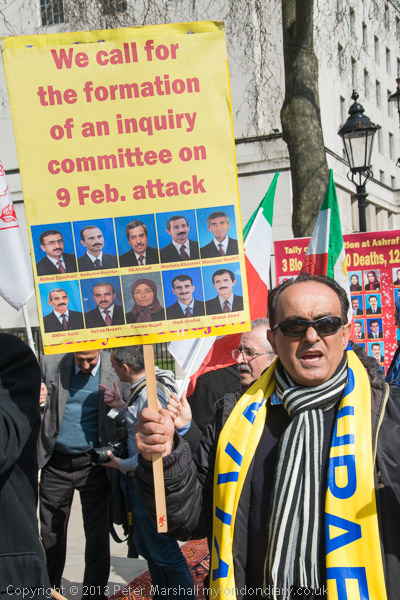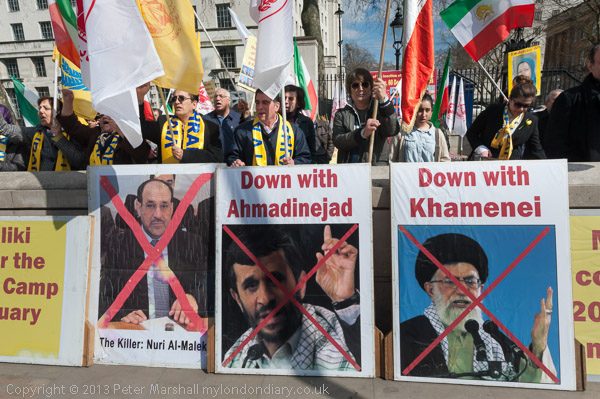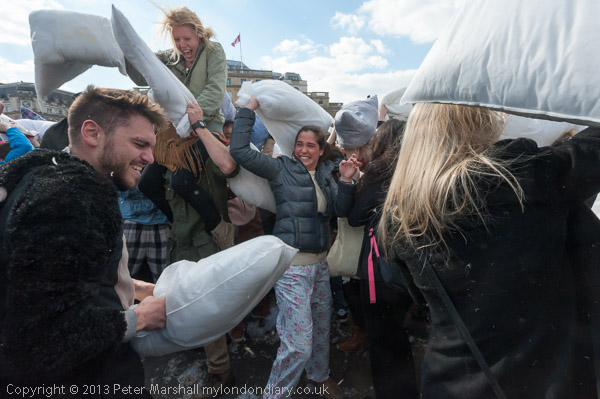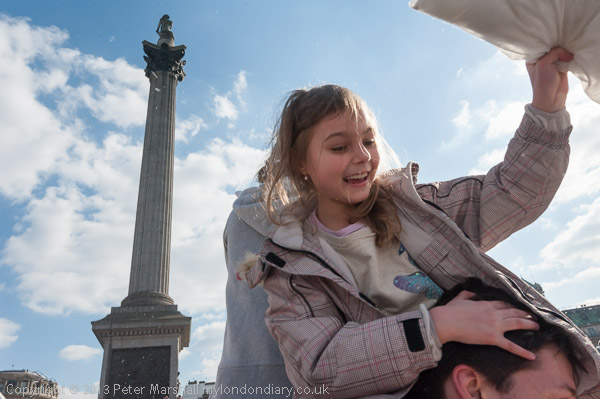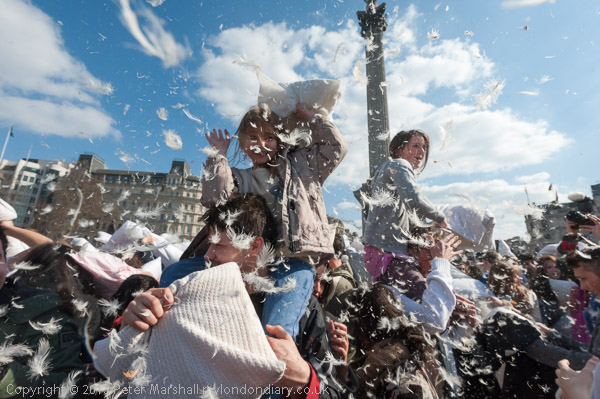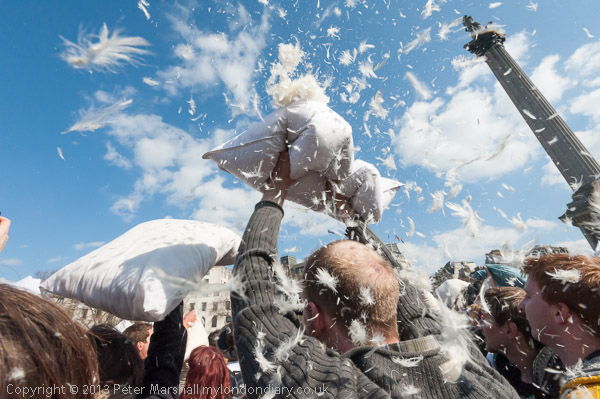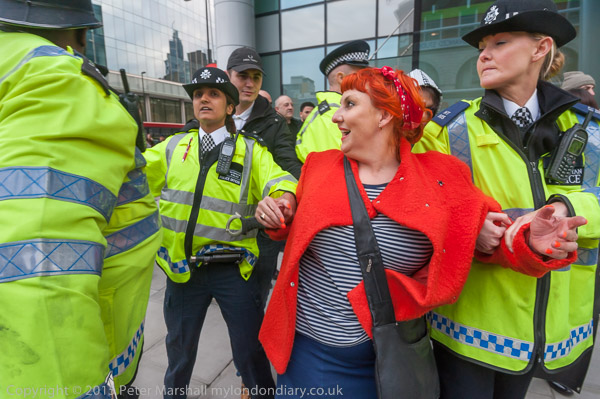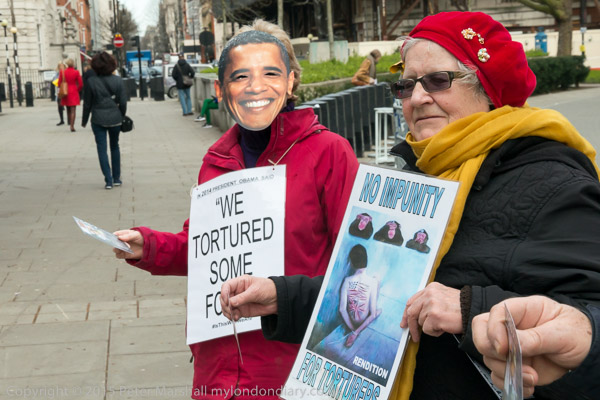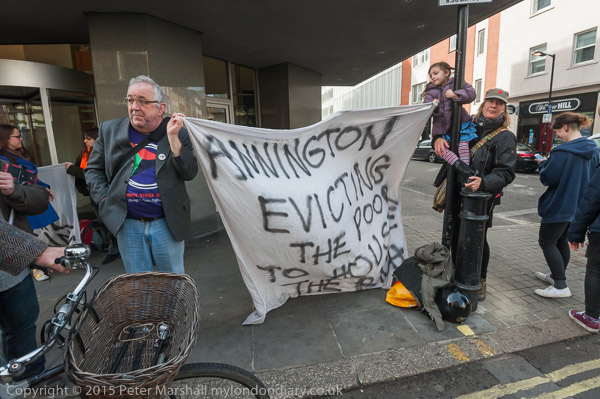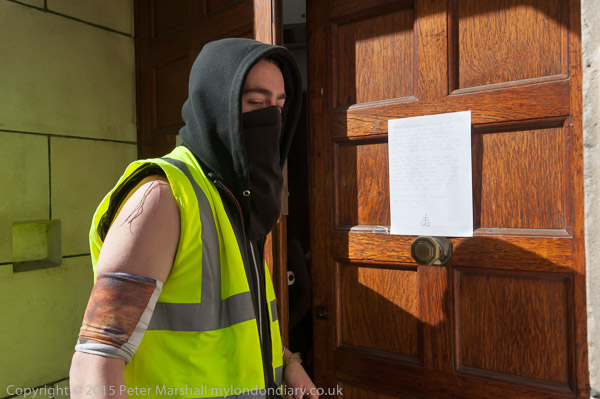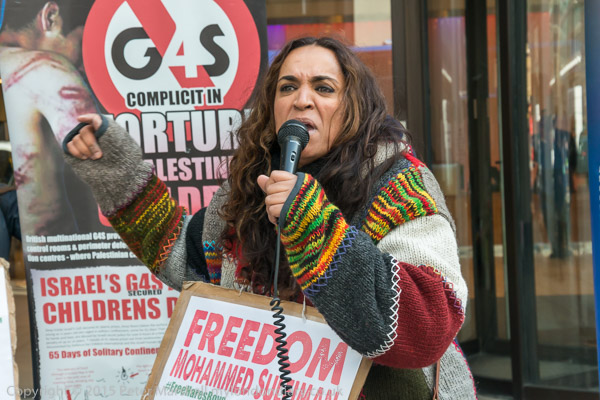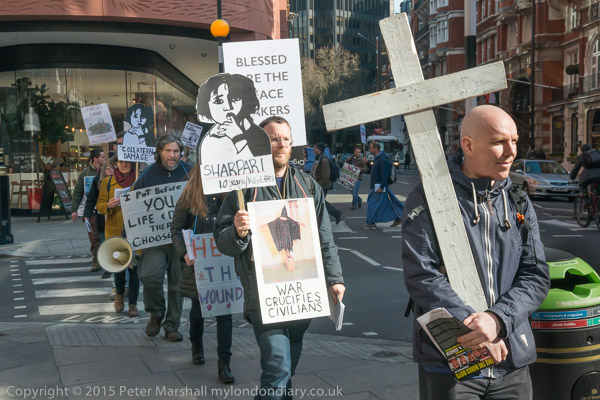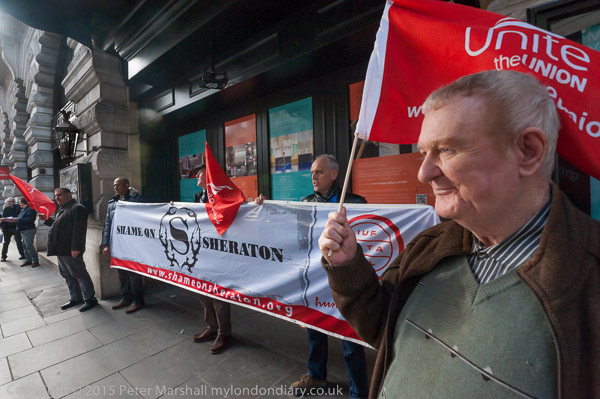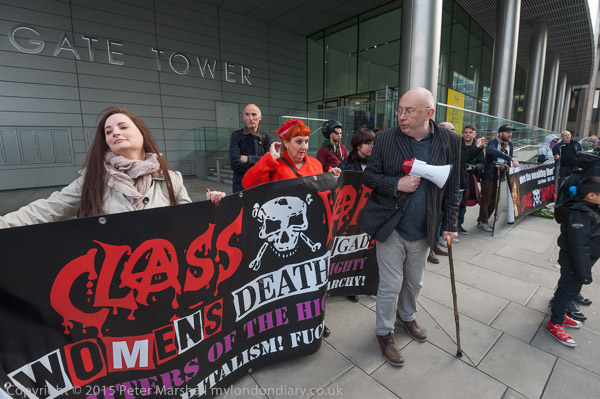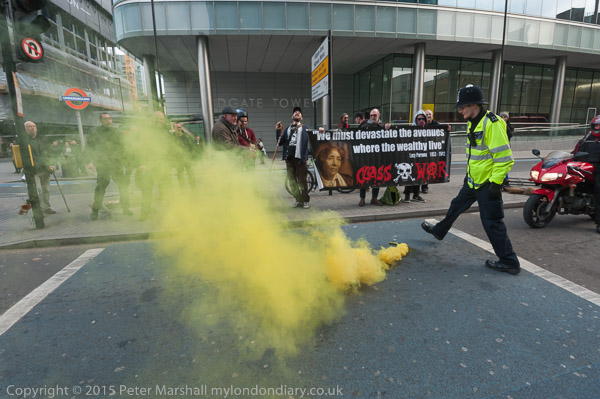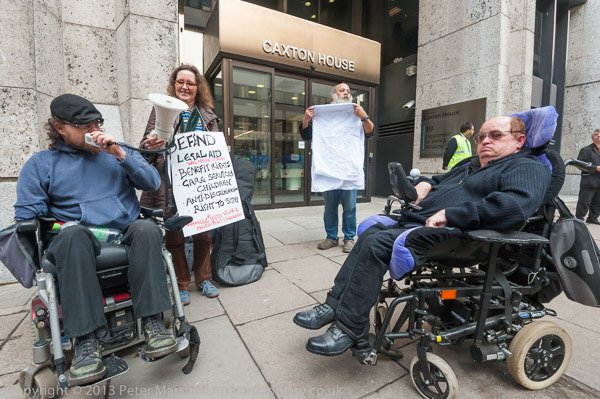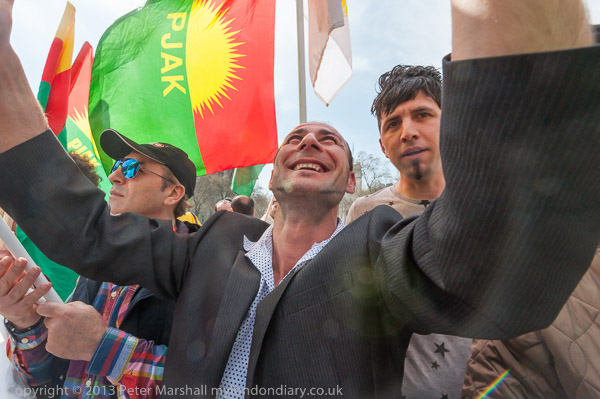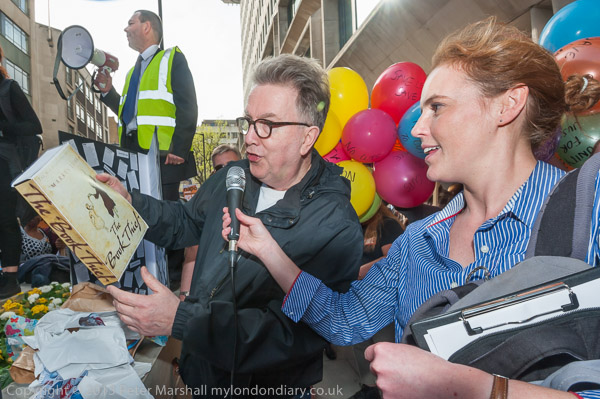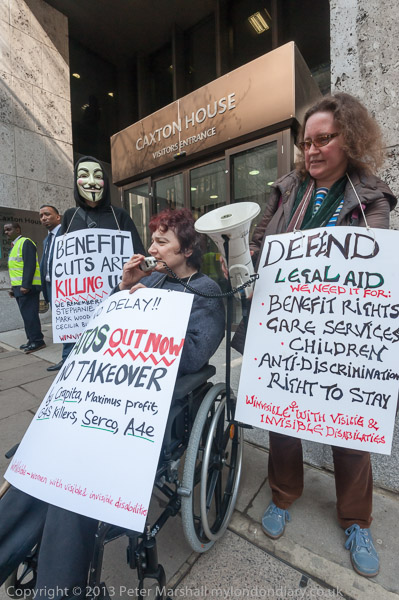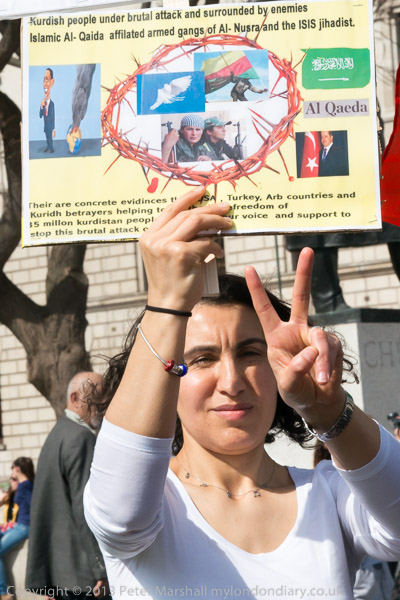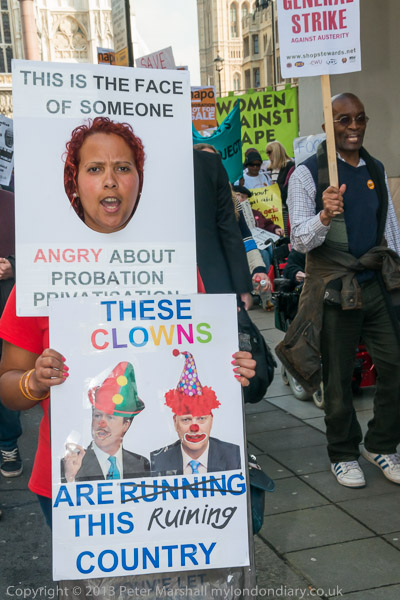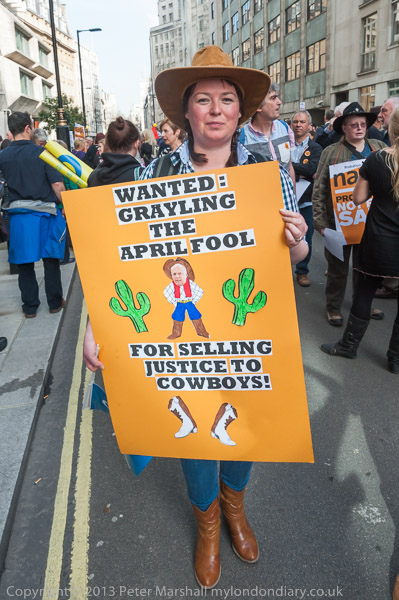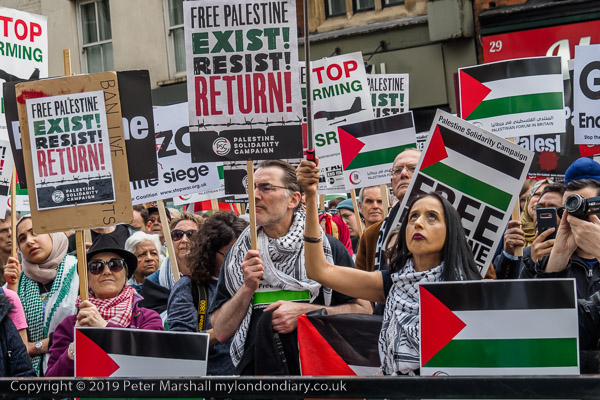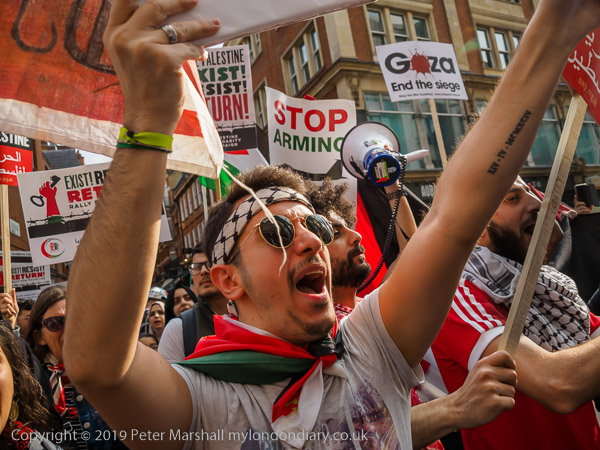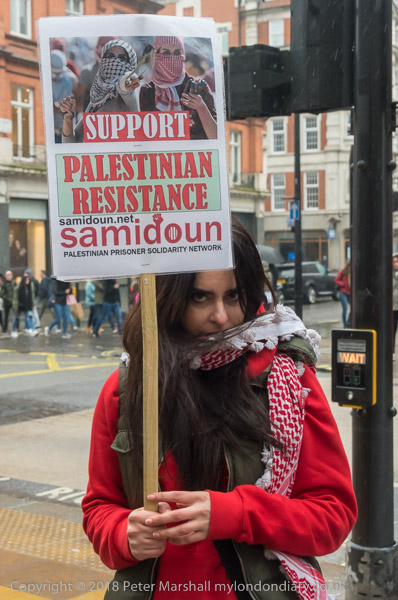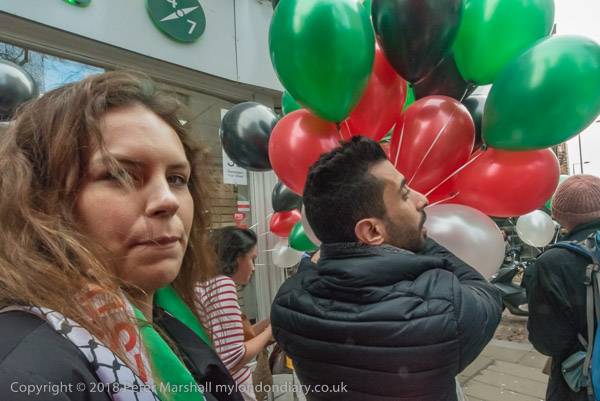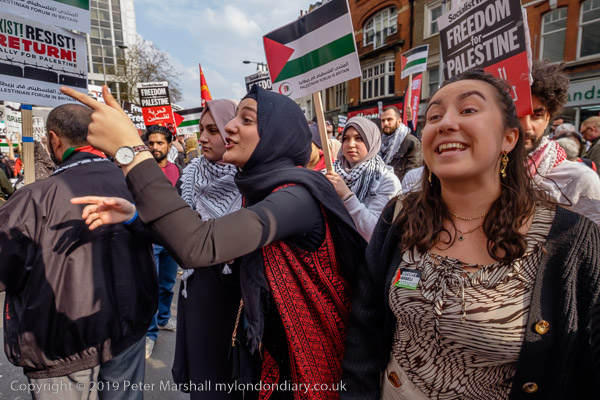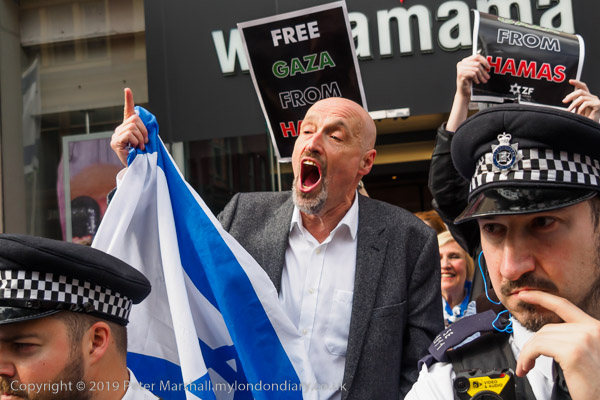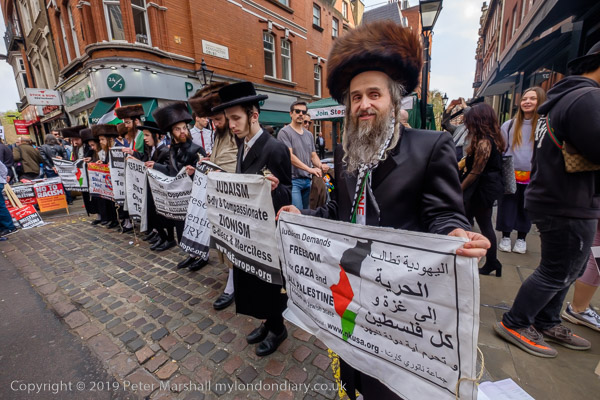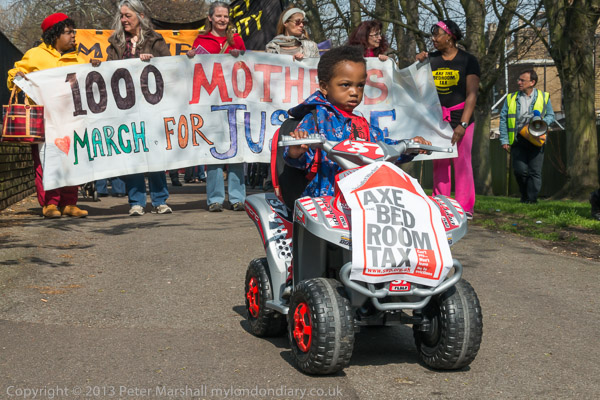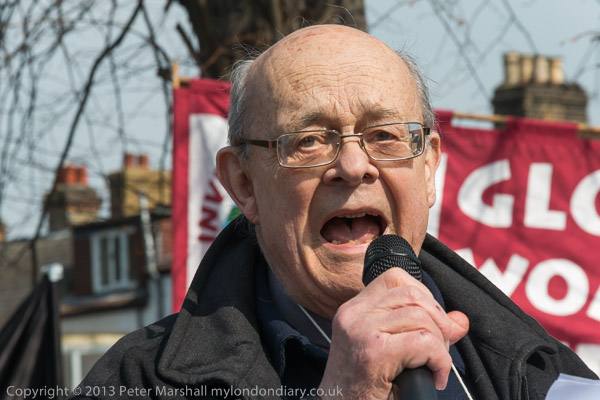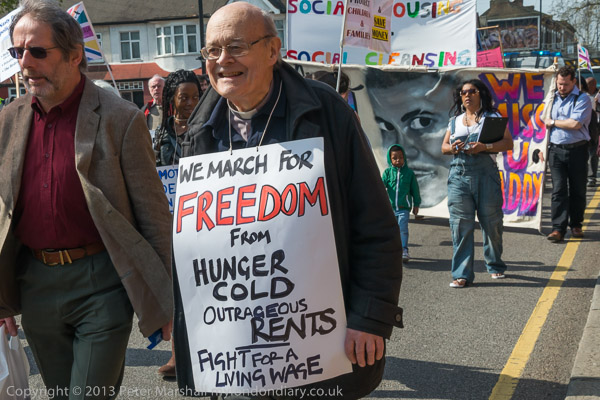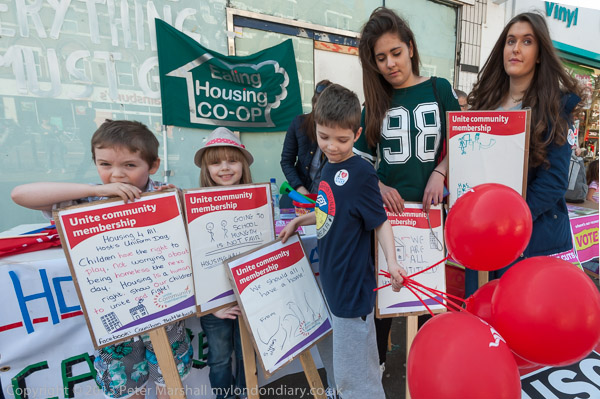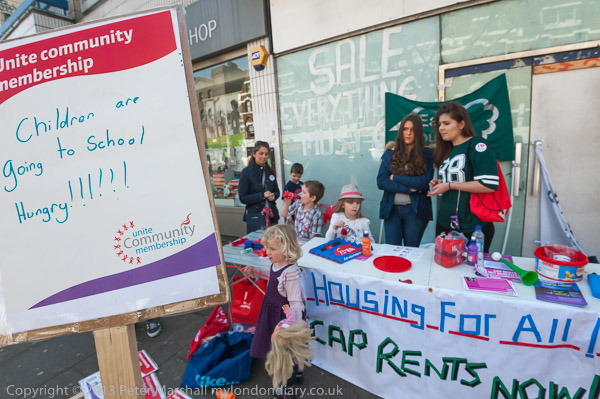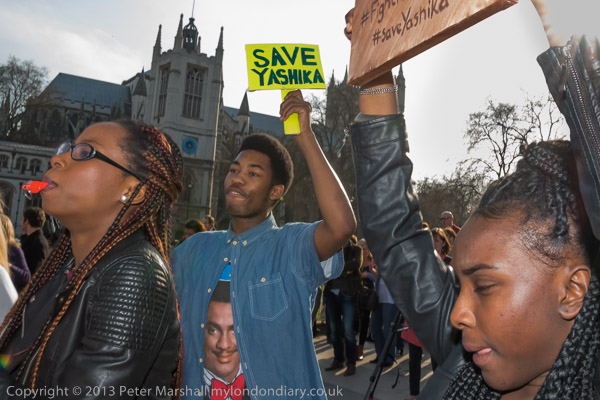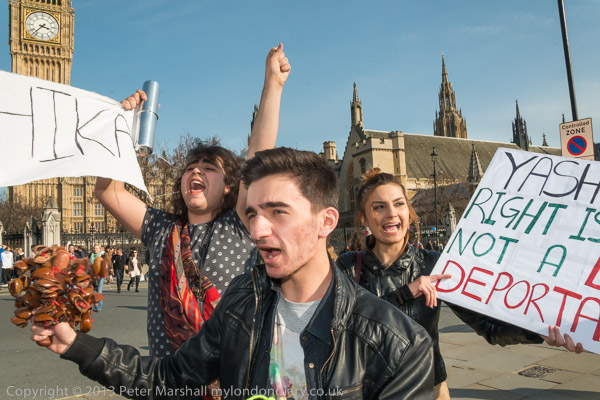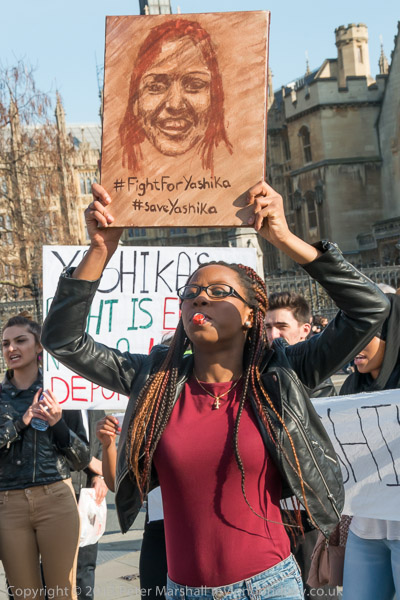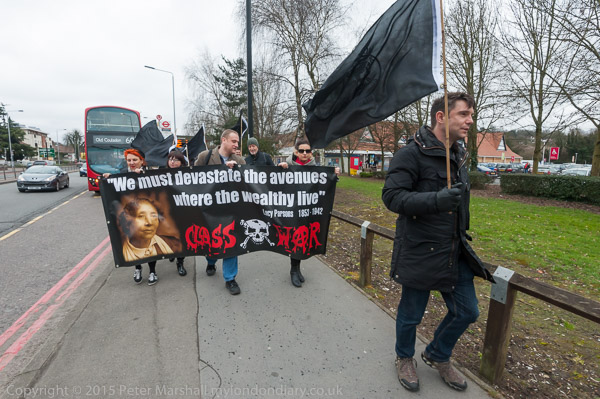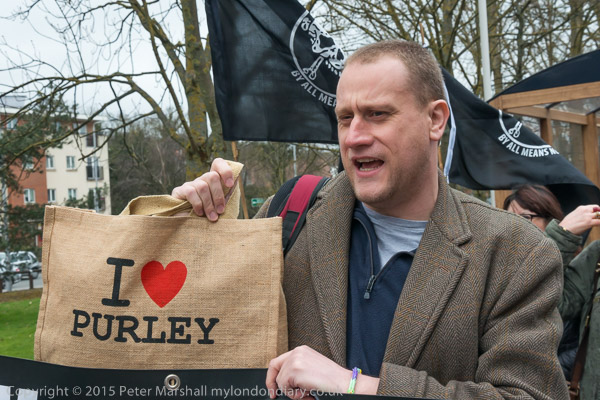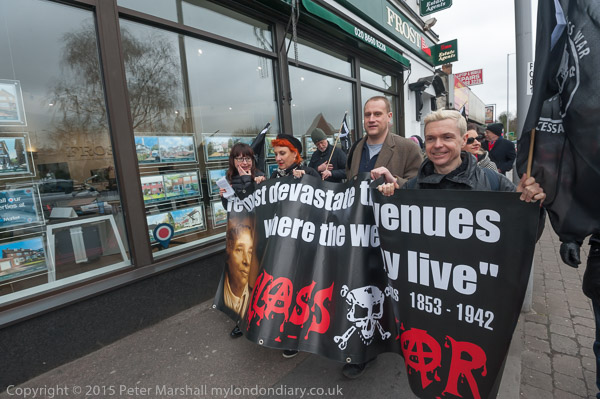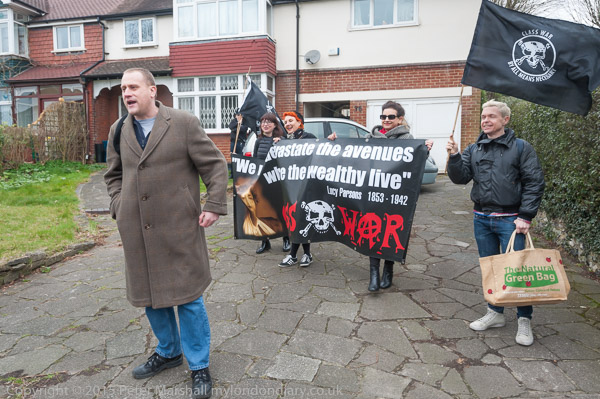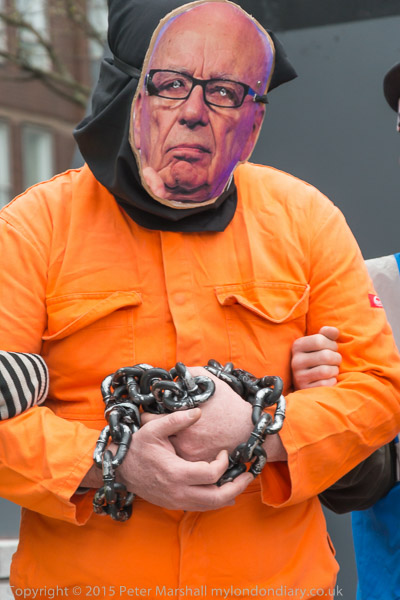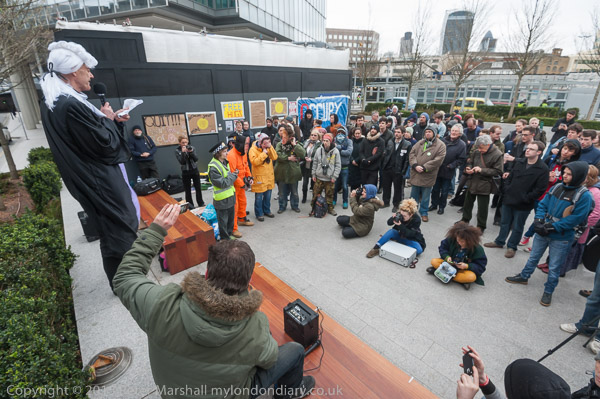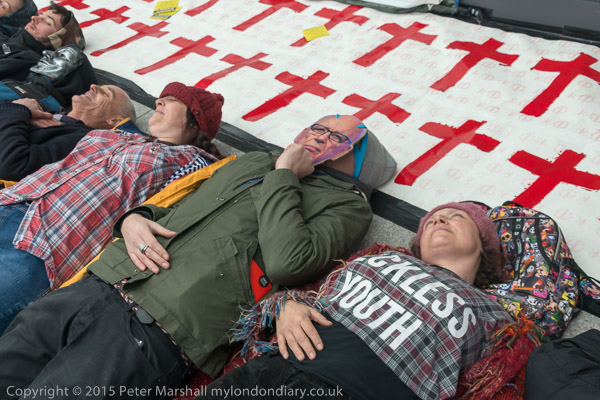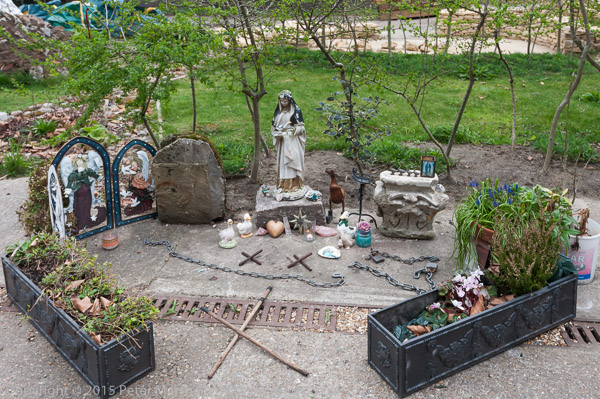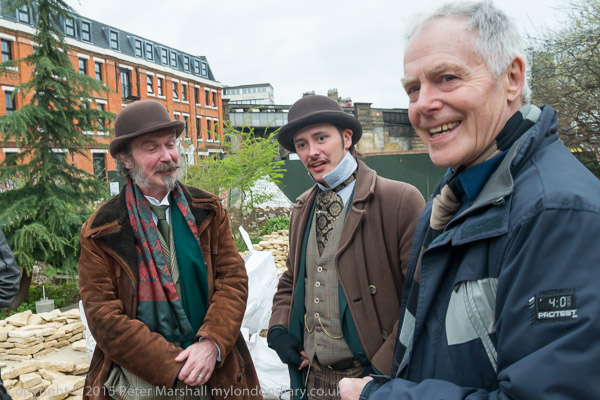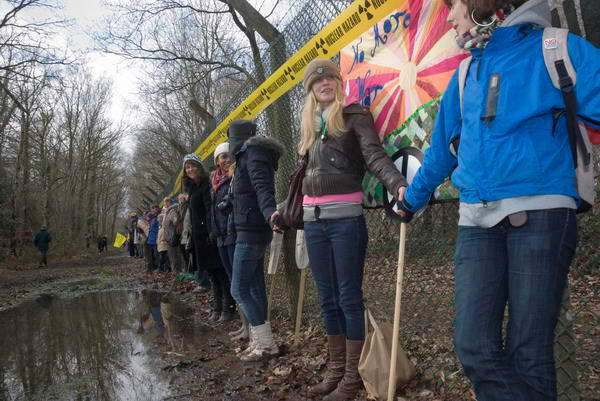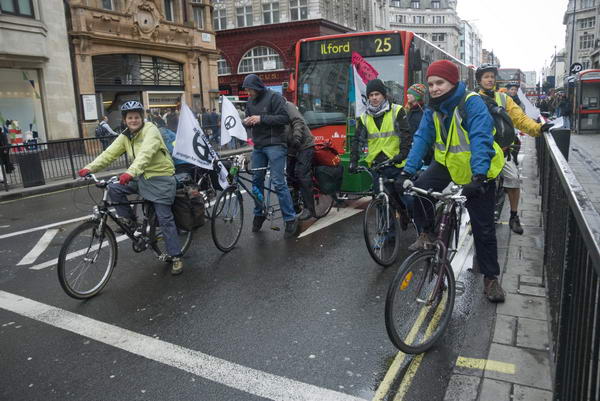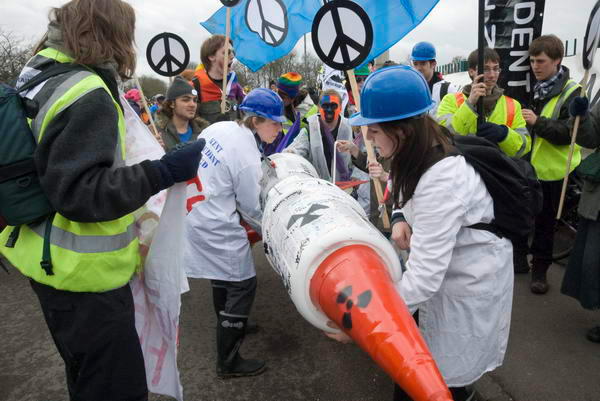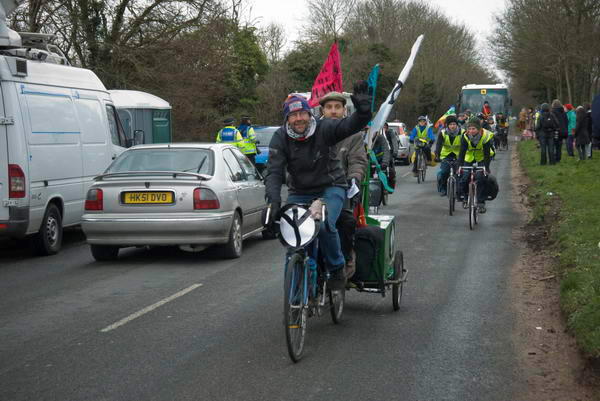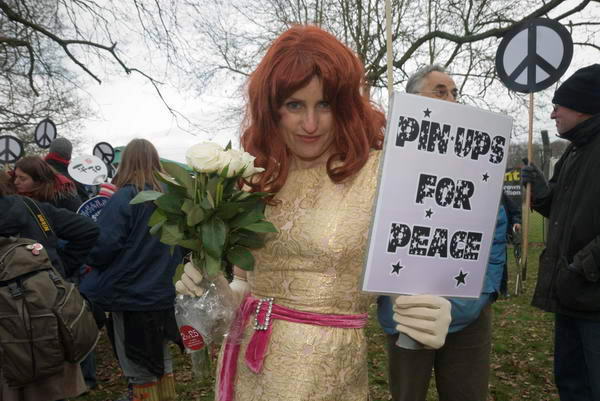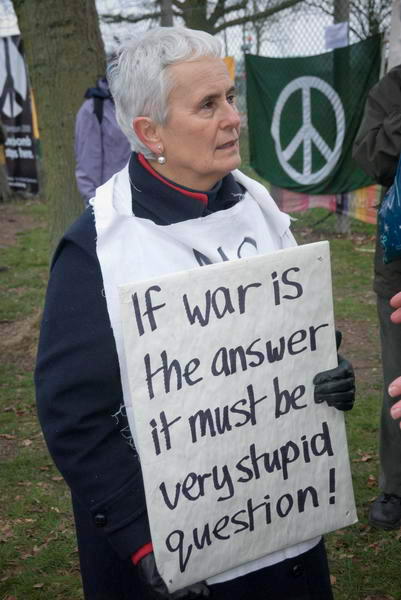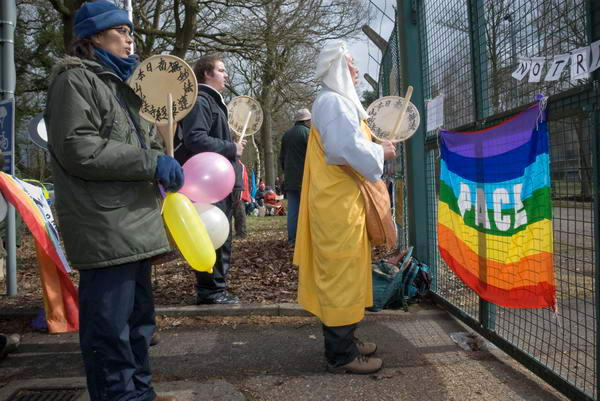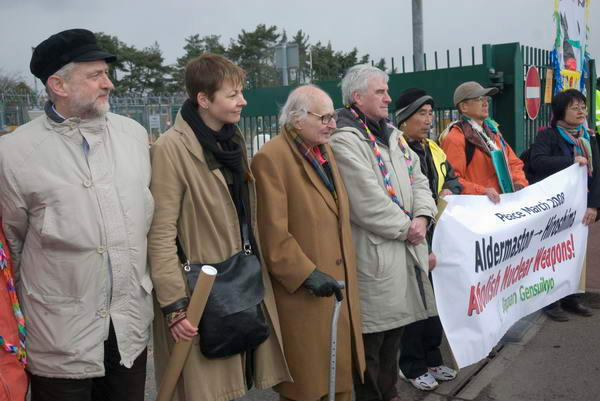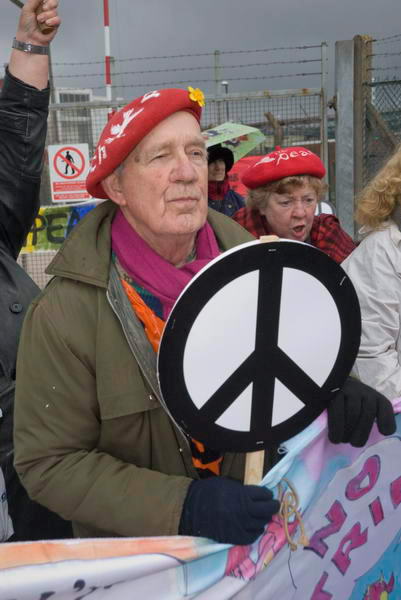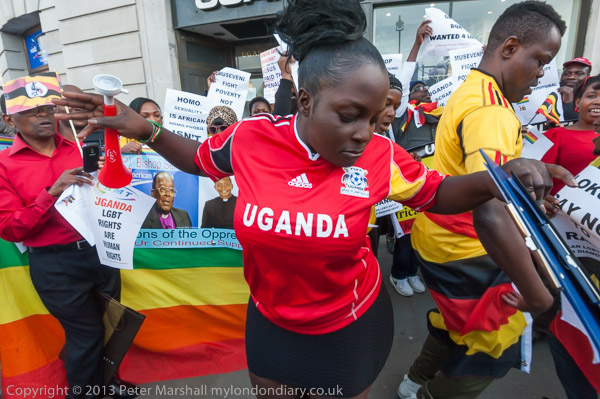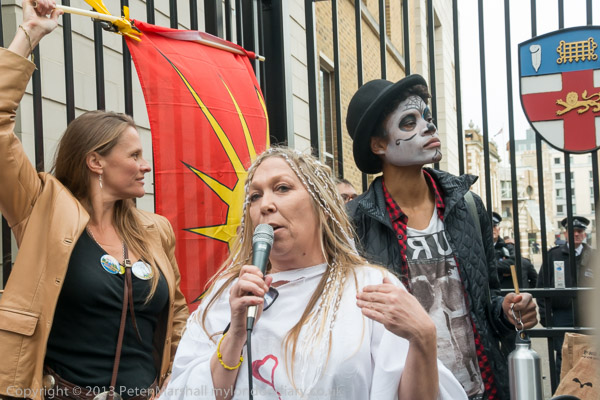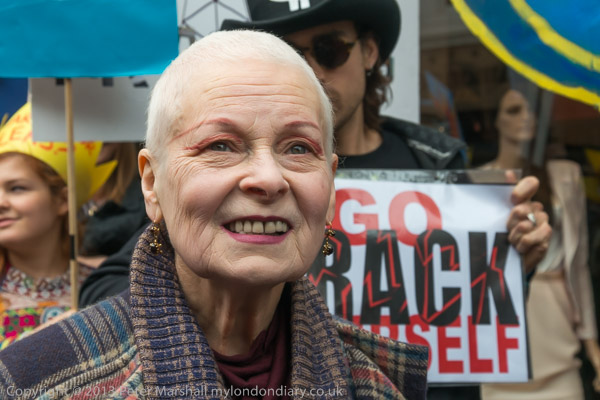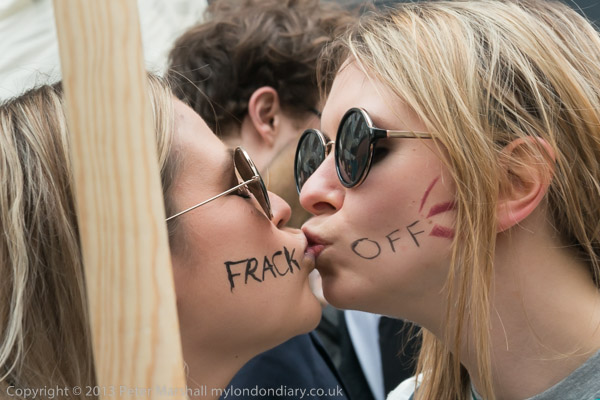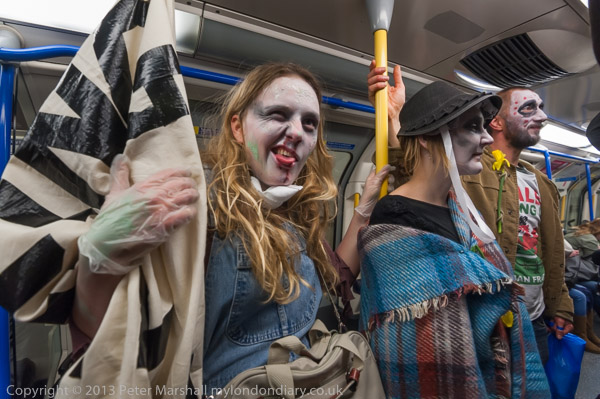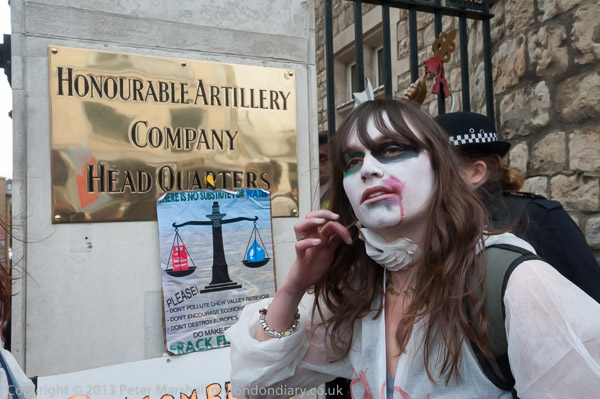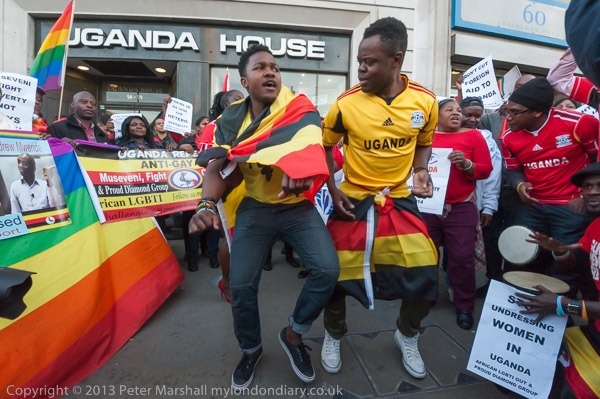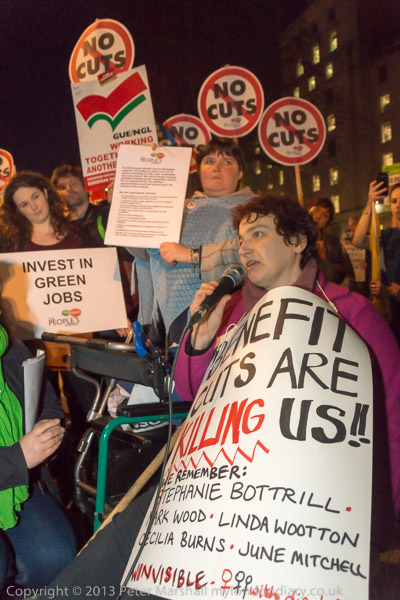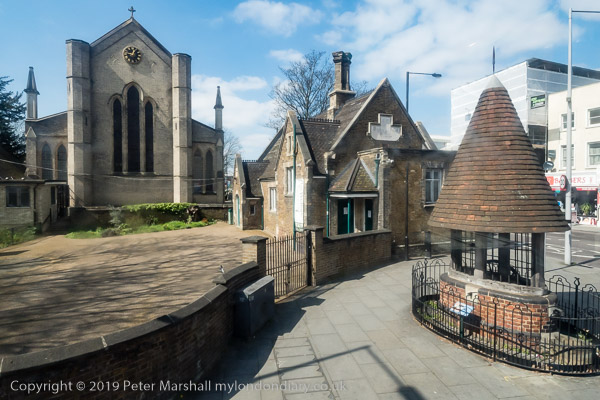
I took the Underground to Seven Sisters, pausing while I waited for a bus to take a few pictures of the shops that would be lost with the redevelopment of the ‘Latin Village’ along with that thriving indoor market. For once I had a clear view from the bus and I took a few pictures as it made its way north to Tottenham job centre. I arrived earlier than expected and walked on the short distance to Tottenham’s new ground, officially opened the previous week, before walking back to photograph the protest I had come for.
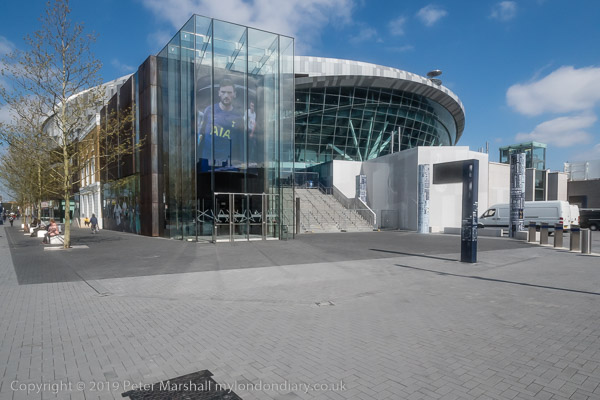
The stadium did seem quite impressive from the outside, though like many others I was less impressed to hear that the football club are keen to pay TfL to change the name of the railway station in White Hart Lane to ‘Tottenham Hotspur’. I’m pleased to see that it still has its old name now, 149 years after it opened with it. Spurs wanted the change because it would increase the chances of finding a sponsor for the new stadium, but there was considerable opposition. And while there is precedent – Gillespie Road on the Picadilly line was renamed Arsenal in 1932 – since that team has now moved from their old ground it perhaps wasn’t a good idea.
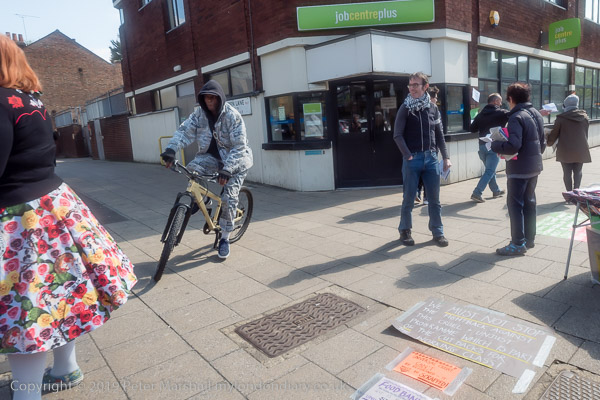
The protest outside the Tottenham Jobcentre Plus was organised by the North London Revolutionary Communist Group and others and was one of many that have been taking place regularly outside job centres calling for Universal Credit to be scrapped. UC was badly thought out but even more poorly implemented, both thanks to Iain Duncan Smith, Secretary of State for Work and Pensions from 2010 to 2016. Designed both to rationalise and cut benefits, it incorporates a delay typically of five weeks between the old benefits ceasing and UC being paid, leaving many with nothing to live on. Some minor improvements have been made, including the availability of loans, but those on benefits are not really in any position to repay loans. Together with a harsh benefits sanction regime which had meant some claimants have lost benefits for long periods for relatively trivial reasons – such as being a few minutes late for an appointment – or having an accident on the way to one, this has resulted in a huge growth in reliance on food banks and even some deaths due to starvation and being unable to heat homes. Many have been forced into huge rent arrears – and in 2018 one in 38 of new claimants became homeless because of evictions.
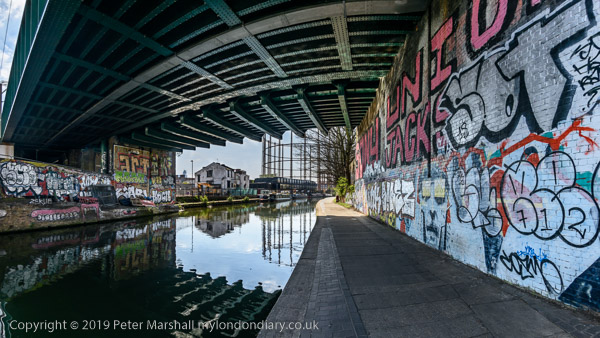
The campaigners were still handing out leaflets and talking to clients going into the job centre and leaving when I caught the bus to make my way down to Bethnal Green. The weather, with sun, blue sky and some clouds was perfect for continuing my project making panoramic images of the Regent’s Canal in preparation for a show to celebrate the 200th anniversary of its opening in 1820.
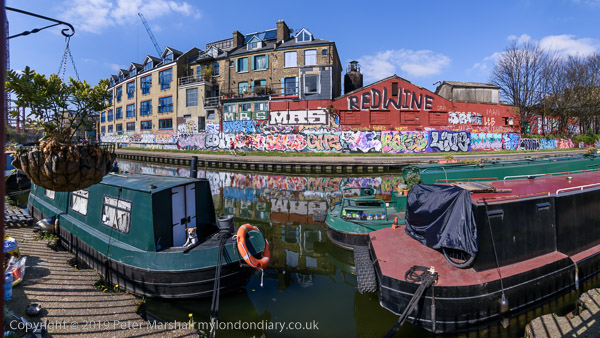
As well as pictures showing the canal I took a few more on my way to Bethnal Green, as well as walking around the area, then along the canal west to Broadway Market.
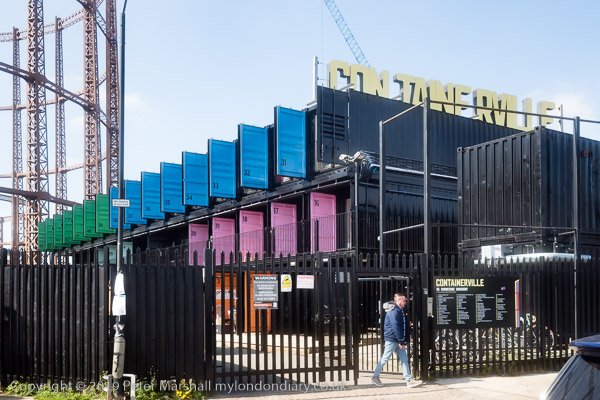
It was then time to get on a bus again, to make my way to the offices of News Corp at London Bridge, where Transmission, a group supporting the rights of trans people, were protesting outside the offices of The Times newspaper against their publication of transphobic articles.
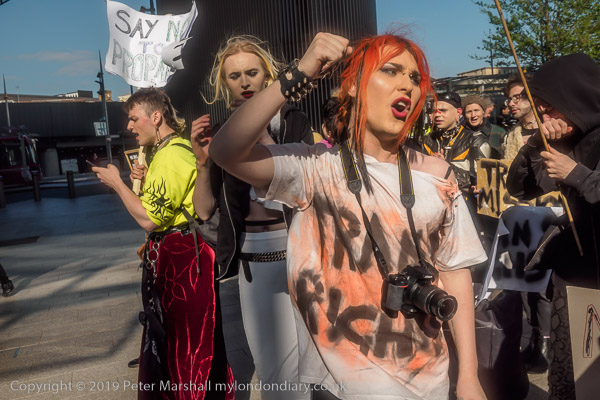
They say the paper has published an unfair article by Lucy Bannerman against the Tavistock Centre and medical services for trans children and has earlier targeted the trans charity Mermaids and ostracised trans athletes for competing in sports.
More on My London Diary:
Times end transphobic articles
Regent’s Canal
Scrap Universal Credit Jobcentre protest
Tottenham and Spurs
